J80 Sailing Guide
Welcome to the Ultimate sails J80 class sailing guide The tips and hints in in this guide come from many years experience in the class and will give you an insight in how to set up and sail your J80 with Ultimate Sails. Combine this with our tuning guide to improve the performance of your J80 and help you move further up the fleet.
Mainsail Trim
When you get started you are aiming to power the main up sufficiently that you have a decent amount of weather helm, but not so much that the boat cannot accelerate when a gust hits.
The tools you will use to do this are the mainsheet, traveller, backstay, vang and outhaul;
The outhaul should be set in light winds with a 100mm gap between the foot of the sail and the boom and gradually tightened so that in a breeze it should be so tight that there is distortion in the foot of the sail.
The Cunningham should be left slack until you are intermittently overpowered, then it should be progressively tightened to remove the wrinkles from the luff, but not pulled so hard that it distorts the sail.
In light airs, the backstay and vang will be loose and you have complete control of the sail shape with the mainsheet and traveller. In this case you should trim the main until the top tell-tale is flying about 50 – 70 percent of the time with the boom held in the middle by pulling the traveller up to windward. Once the breeze is up to the point where the boat is fully powered up and it is necessary to ease the traveller, then you must also use the backstay and vang to help control the mainsail shape. From this point on it is impossible to stop all the tell-tales flying, so we must use the balance and feel of the helm to help us trim the mainsail instead.
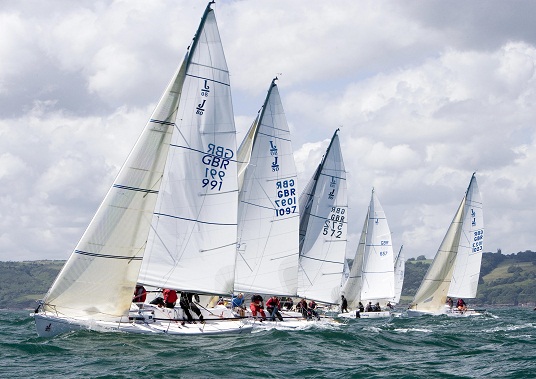
The fastest way to sail the J80 in fully powered conditions is to have the mainsheet locked off and play the traveller through the gusts. You then use the vang and backstay to control the drive and power in the main to balance the helm properly. When everything is set up perfectly the boat will have a reasonable amount of weather helm. When a gust hits and you ease the traveller the boat should accelerate smoothly and the helm will feel light and sensitive almost to the point where it is neutral – with neither weather nor lee helm.
If you have pulled on the backstay and vang too tight, then you will have neutral helm before any gust hits and the boat will not point. Apart from feeling wrong so that you will have to push the rudder around a lot to make the boat steer, you will notice your lack of pointing ability very quickly compared to the boats around you. If you have not pulled on the backstay and vang enough to de-power the mainsail, then the helm will not go neutral before the mainsail starts flogging in a gust. So you must learn to judge from the feel of the helm, and the way the boat accelerates in a gust, whether or not the mainsail needs more or less power. Remember that you pull the vang and backstay on to de-power, and ease them to power up.
This leaves us with the crucial question of how much of each you should pull on to de-power the mainsail efficiently. Generally the vang will de-power the lower third of the mainsail and the backstay the top two thirds. You shouldn’t pull the vang on so much that you create luff starvation creases. This distortion will consist of vertical creases running from the mast towards the clew, and it will be particularly severe around the track feed on the mast three or four feet above the gooseneck. If you see these luff starvation creases, ease the vang and pull on more backstay. If you have too much backstay and not enough vang, then you will find that the sail starts to backwind low down the moment you ease the traveller in a gust. This is because with not enough vang, the bottom of the mainsail is too full, and when you ease it, it falls straight into the jib exhaust and backwinds.
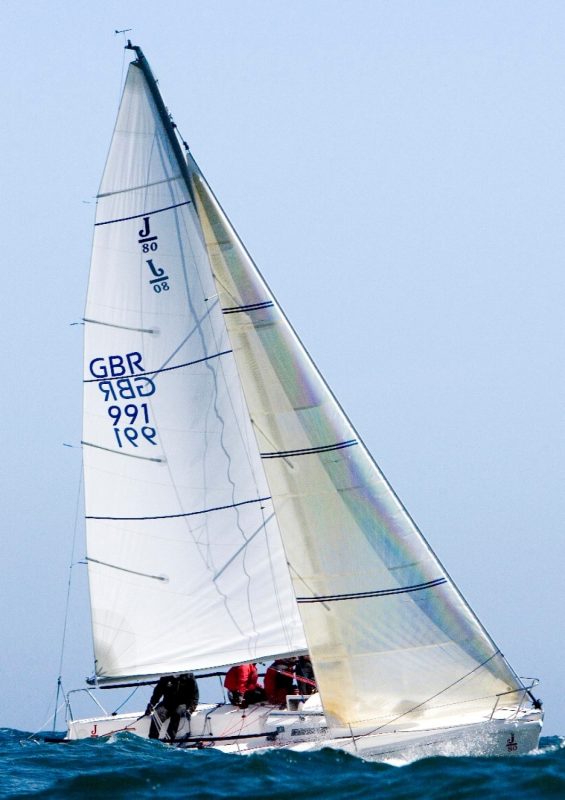
JibTrim
The J80 Jib is sensitive to sheet tension in all conditions and speed gains are significant if the trimmer is constantly adjusting the sail. The Jib sheets are ‘cross winched’ so that the loaded sheet is on the windward winch. This makes it relatively easy to adjust the sheet tension without the trimmer coming off the rail. The clew is close to the turning block so jib car position is also critical and there are only three positions used over the full wind range (see tuning guide for details). Halyard tension needs to be adjusted through the wind range and we recommend fitting the optional cabin top winch for the Jib halyard. With that it is lot faster and easier to increase halyard tension as the wind increases. We leave the halyard on the winch at all times so that it is always ready to be tweaked as the conditions change. In light winds the Jib should have some horizontal creases in the luff. As the wind increases the halyard tension should be gradually increased so that in maximum power conditions the luff is tight. The J80 Jib has three tapered vertical battens in the leech and it is easy to put them in the wrong way which is very slow!. The thick end of the batten should always be at the leech of the sail and we always mark the batten with an arrow to show which way it should be put in the pocket. As the wind increases you may find that the leech line needs more tension to stop the leech vibrating or ‘motoring’. Always pull it on the minimum amount that stops the vibration because excessive tension will distort and hook the leech. As the sail gets older you will eventually find it impossible to stop the motoring without tightening the leech line to the point where it distorts the leech shape – this is the time to start thinking about ordering a new sail!
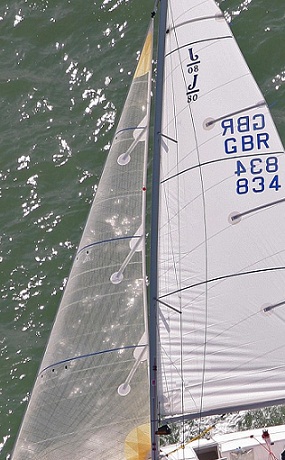
Downwind Sailing
The mainsail trim is straightforward for downwind sailing. Ease the vang and the backstay as you round the mark, not before – otherwise you will power the mainsail up at exactly the moment you don’t want to, when you are trying to bear away. The cunningham should go off completely and the outhaul be eased until there is about a hand’s width gap between the foot of the sail and the boom. Once you are sailing downwind with the asymmetric hoisted, trim the vang so that the leech end of the top batten is parallel to the boom. Keep an eye on the top batten which has a tendency to invert if the vang is eased too much and that is slow! Ease the backstay again until it has just got some load on it. Ensure that there is sufficient backstay tension to keep the mast straight and stop it inverting.
Always fully hoist the spinnaker halyard. The tack line should also be pulled on hard except when running very low in medium conditions where it can be eased up to 30cm allowing the luff to rotate further around to windward.
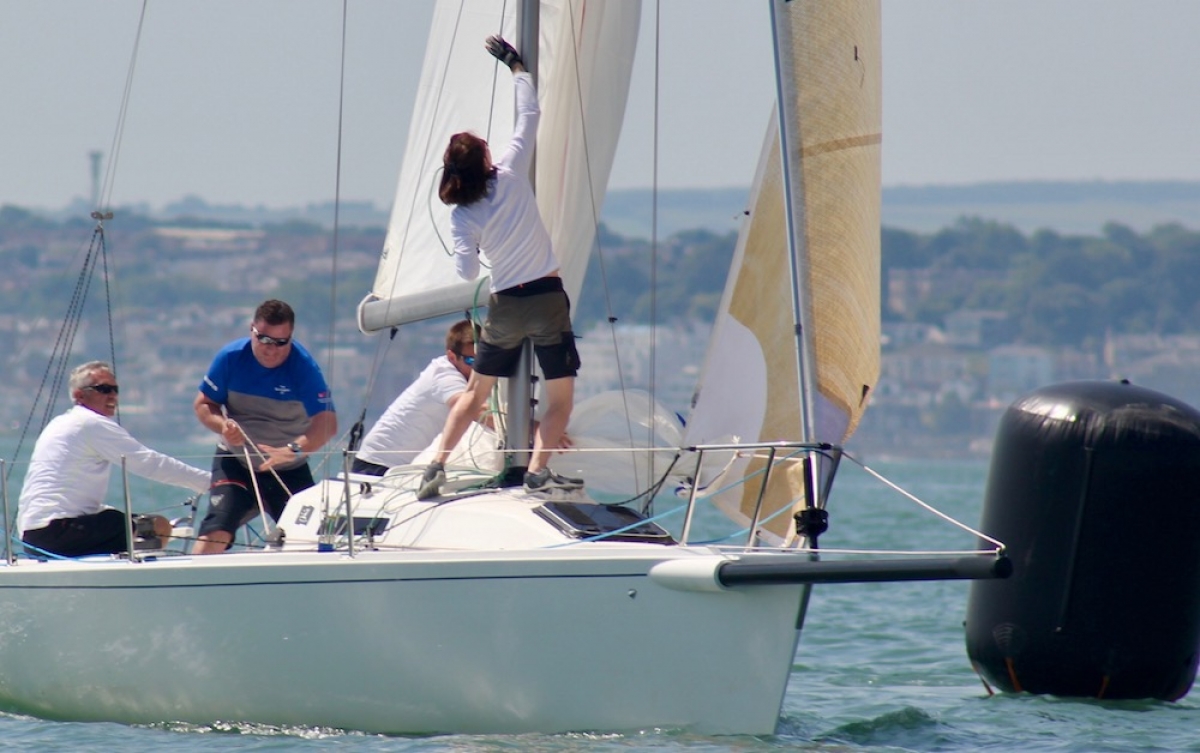
Downwind sailing in the J80 is all about sailing the right angles with good spinnaker trim. This requires the maximum concentration from everyone on the boat. The tactician needs to watch the opposition closely to see how you are doing. He gives this information to the spinnaker trimmer and helmsman, who then use it to help to balance the pressure in the spinnaker sheet with the angle that the boat sails downwind to optimise your performance against the opposition. This focus on what is going on around you is the critical point to sailing well downwind. You will never find the fastest angle and trim on your own, it is only by constant direct comparison with the boats around you that you can judge your VMG.
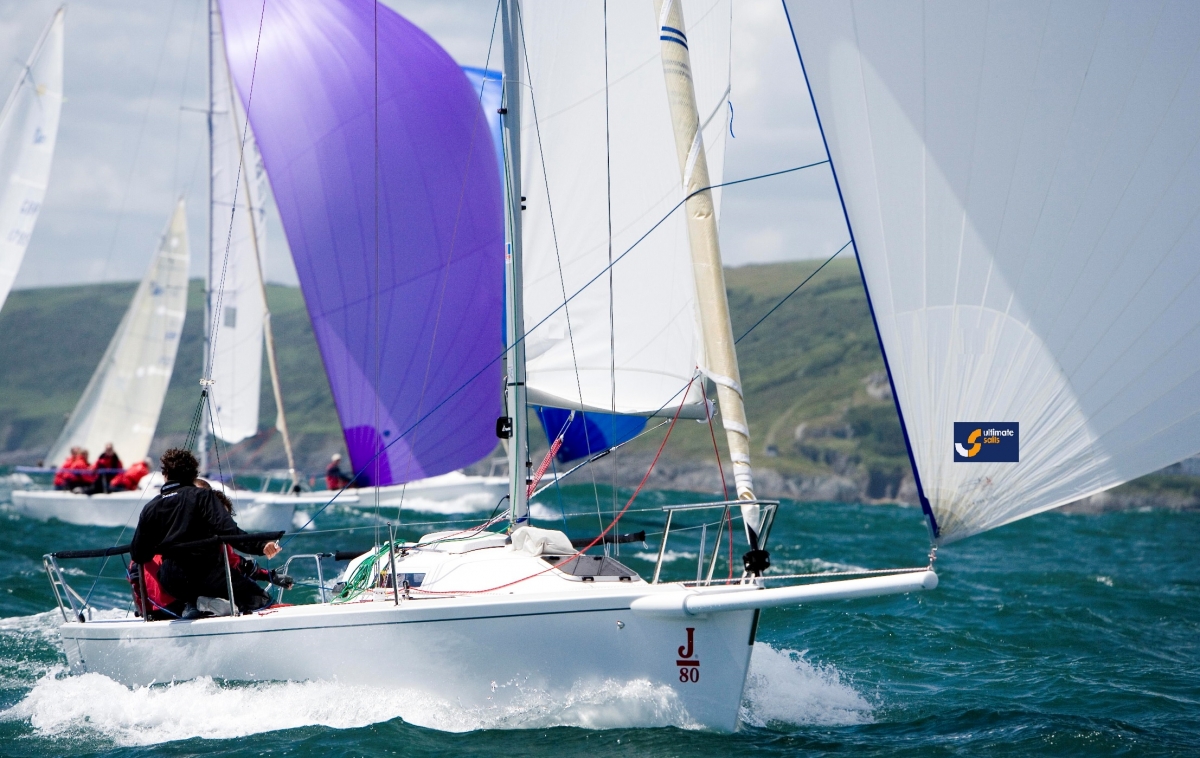
Practising your spinnaker trim and steering is only half of the job downwind. For those new to asymmetric spinnakers there are many new skills to learn. The downwind angles of the J80 give you a lot more tactical options than do conventional boats and symmetrical spinnakers. If you see a gust – gybe over to it, run deep, or come high to stay in it. The J80 is so responsive to just a little bit of extra pressure that it is vitally important to be in as much as possible. If you are not looking around for the gusts and working the boat into them, other boats will just sail past.
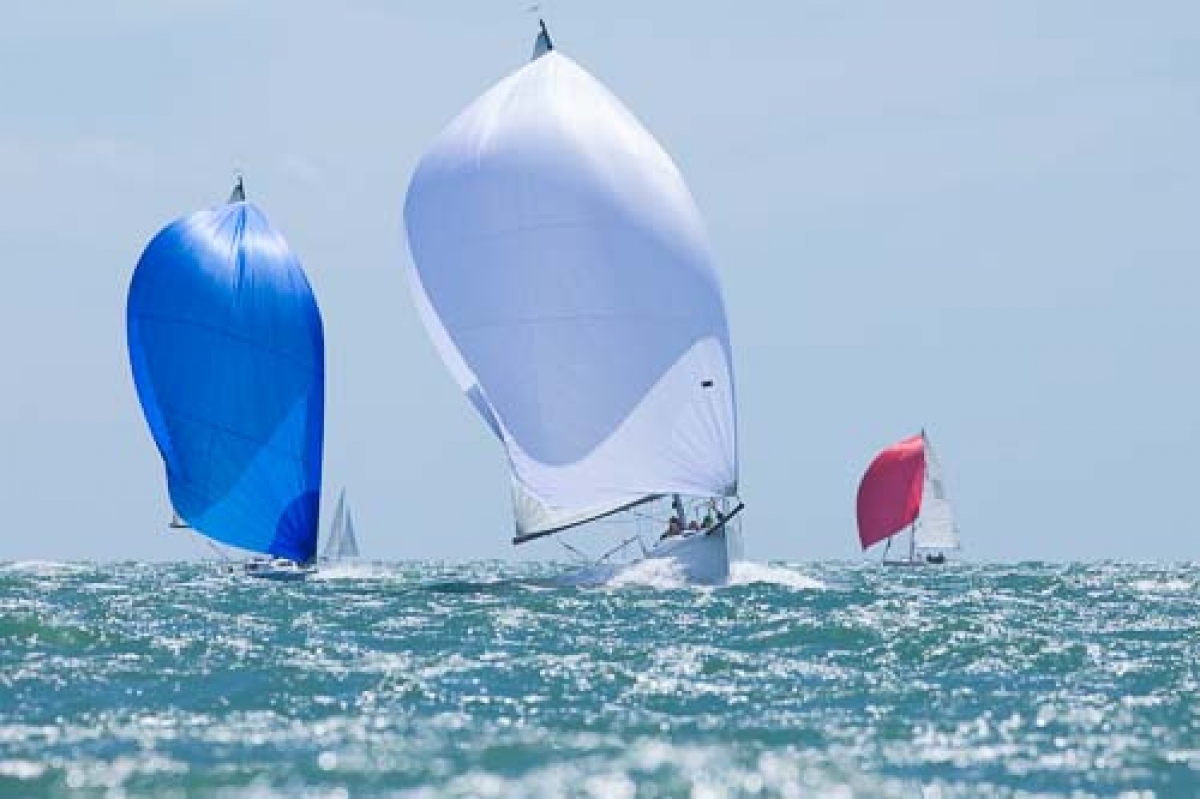
In light and medium airs you must concentrate on trying to get low. Heel the boat to windward which allows the sail to rotate further around to windward into clear air. Try to work the boat deep as the gains are made by working the boat low and getting to leeward of other boats. You will never be steering a steady course and there must be the same continual dialogue between the trimmer, the helm and the tactician.
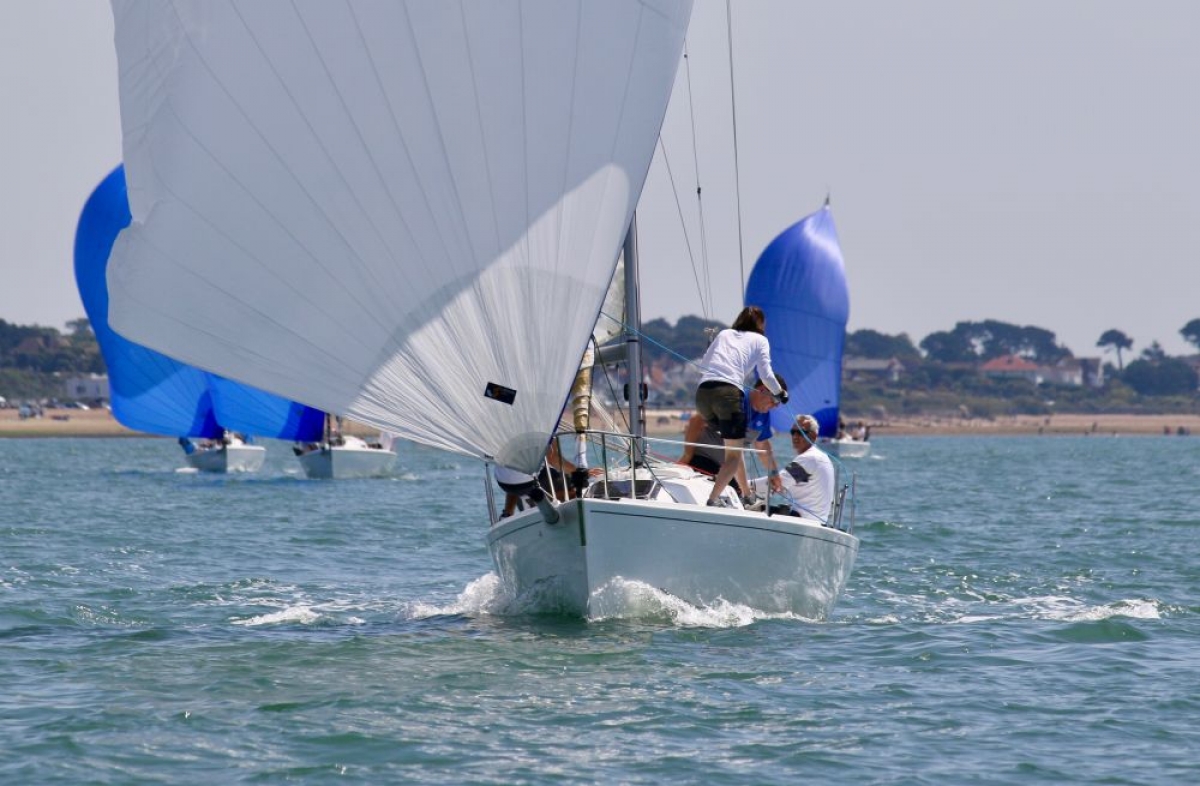
Wait till you have the speed built before you bear away in a gust or a wave. Once it is breezy enough that the spinnaker is really loading up you must sail higher and try to get the Boat planing. Keep watching the gusts and remember – pressure is everything, if you’re in it, you’ll win it. Only practice will enable you to master the art of sailing fast downwind in the J80 – but at least with Ultimate Sails you can be confident you have the very best tools for the job.
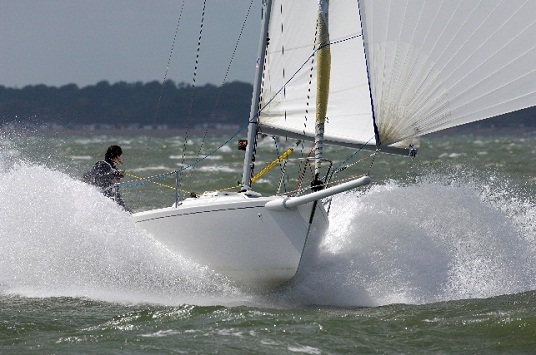
Cruising, Racing and
Lightwave Endurance Sails
Online Instant Quote Generator
No pressure. No obligations. Instant

